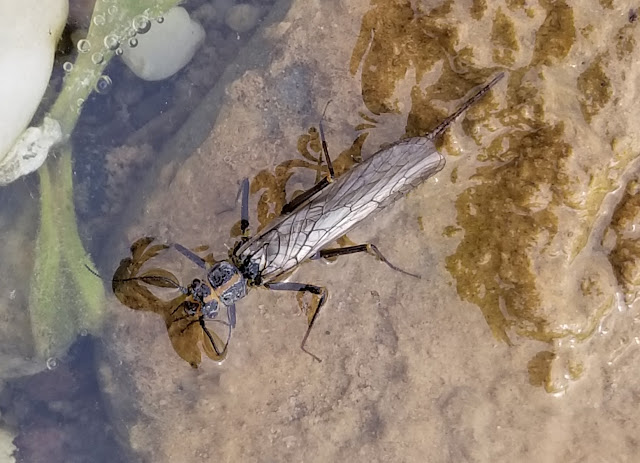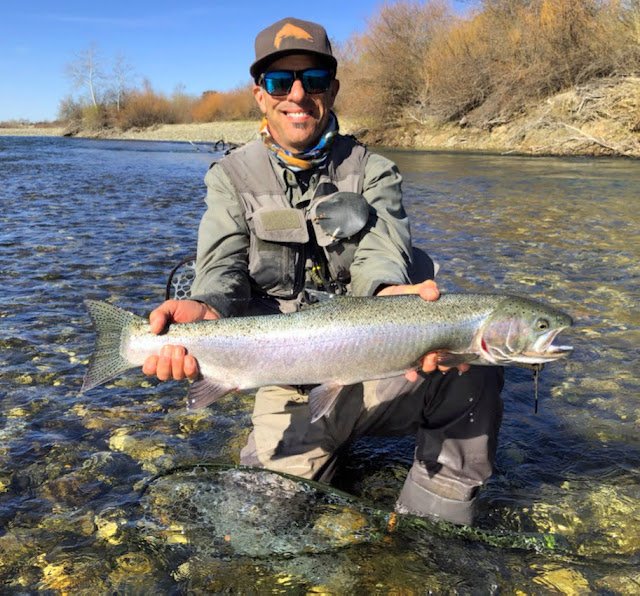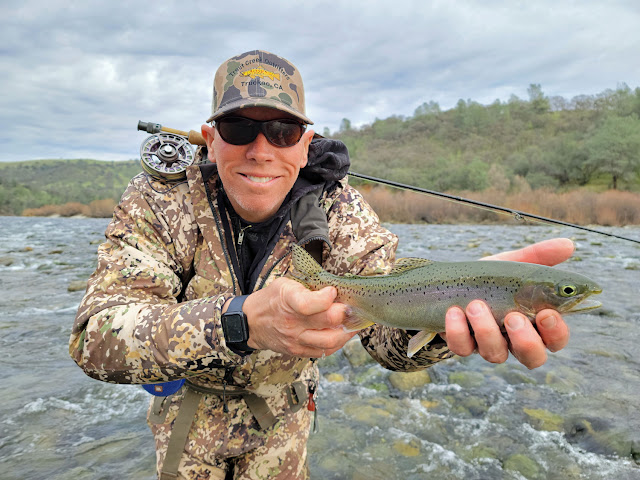It’s been so nice to back on my home water of the Middle Fork Feather River. Fishing has been fair, but then again it is early season for this designated Wild & Scenic river, and the crown jewel of the Lost Sierra. Warblers and songbirds have returned, willows are budding, and native grasses are doing their best to punch through last year’s dead growth, as the land makes the slow transition into the rhythms of spring. Water levels are super low in the upper watershed, maybe the lowest I’ve ever seen for this time of year. This spring season on the recreation zone of the MFFR will have about a month and a half of prime time, and then it will shut down until fall.
The Middle Fork Feather River is very hard to predict how the conditions will be in spring time as there are so many variables that can affect it. Since there is no dam to regulate the flows, it relies on the spring thaw of the snow pack from the Sierra Valley, Lake Davis area, Lakes Basin, and the Jamison creek watershed, plus natural springs.
During this time of year, I monitor day and night air temps closely everyday as they will greatly affect the rate of melt, which directly corresponds to just how well the river will fish. There is still quite a bit of snow on the surrounding peaks that still needs to thaw. The best case scenario is that the rate of melt is slow and steady, which bodes well for a better spring season.
Water temps greatly affect the wild trout of the Middle Fork Feather River more than any other watershed I know of, which adds to the complexity of this river. Trout will start thinking about eating flies around 49 degrees, but prefer when the water temps are 51 and above. It is my belief that the resident trout have adapted to an overall warmer watershed than let’s say the Truckee River. So with that, mornings have been slow with the best action after noon time (for now).
Like I said, this is a very hard river to predict, and I’m
thankful I lived in the area full time for 14 years while putting in over a
thousand days to really learn the rhythms of the watershed. For you the reader,
I’m here to shorten the learning curve and educate you on the intricate details
of this most amazing river.
Aquatics in the mix include a heavy hatch of midge, BWOs,
Gray Drakes, Brown Duns, Little Green stones (not to be confused with the
Yellow Sally), Golden Stones, creamy crane flies, and a few caddis. This will
change dramatically in the weeks ahead. The bugs become more active as the
water temps increase throughout the day.
Euro Tight Line High Sticking Direct Contact nymphing is the
preferred method right now, though we have had a few opportunities with dry
flies, but the best is yet to come with hunting heads and rising fish. I’m
really looking forward to that. The sub surface grabs are very subtle right now,
and since hook sets are free, take them often. Just a reminder, The Middle Fork Feather River trout are mostly wild and all anglers need to practice good catch and release methods by keeping fish wet, and limiting their time out of the water. Other factors like keeping your fingers out of the gills, and not excessively squeezing the heart and organs of the fish should be first and foremost. It is imperative to be good stewards of all rivers, streams, and creeks while practicing healthy catch and release to ensure these wild fish reproduce naturally with great success.
I have very few days available for trips through July 15th.
Shoot me an email at baiocchistroutfitters@yahoo.com to see if any of my open
dates work for you, or get on my cancellation list. Old growth coniferous
forests, solitude, crystal clear water, profuse hatches, wild trout, and
exploring the natural world – That’s the Lost Sierra!
See you on the water…
































































